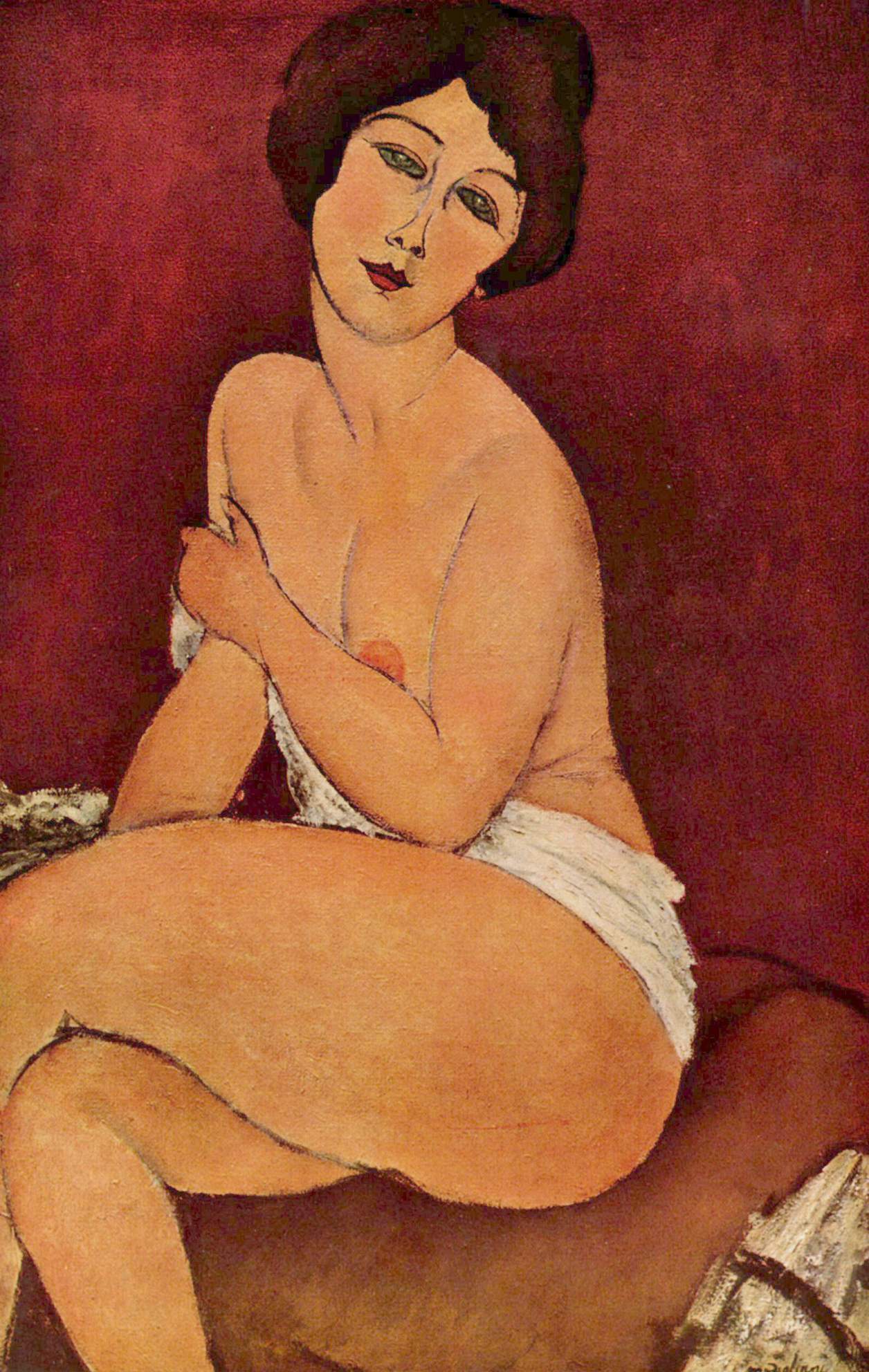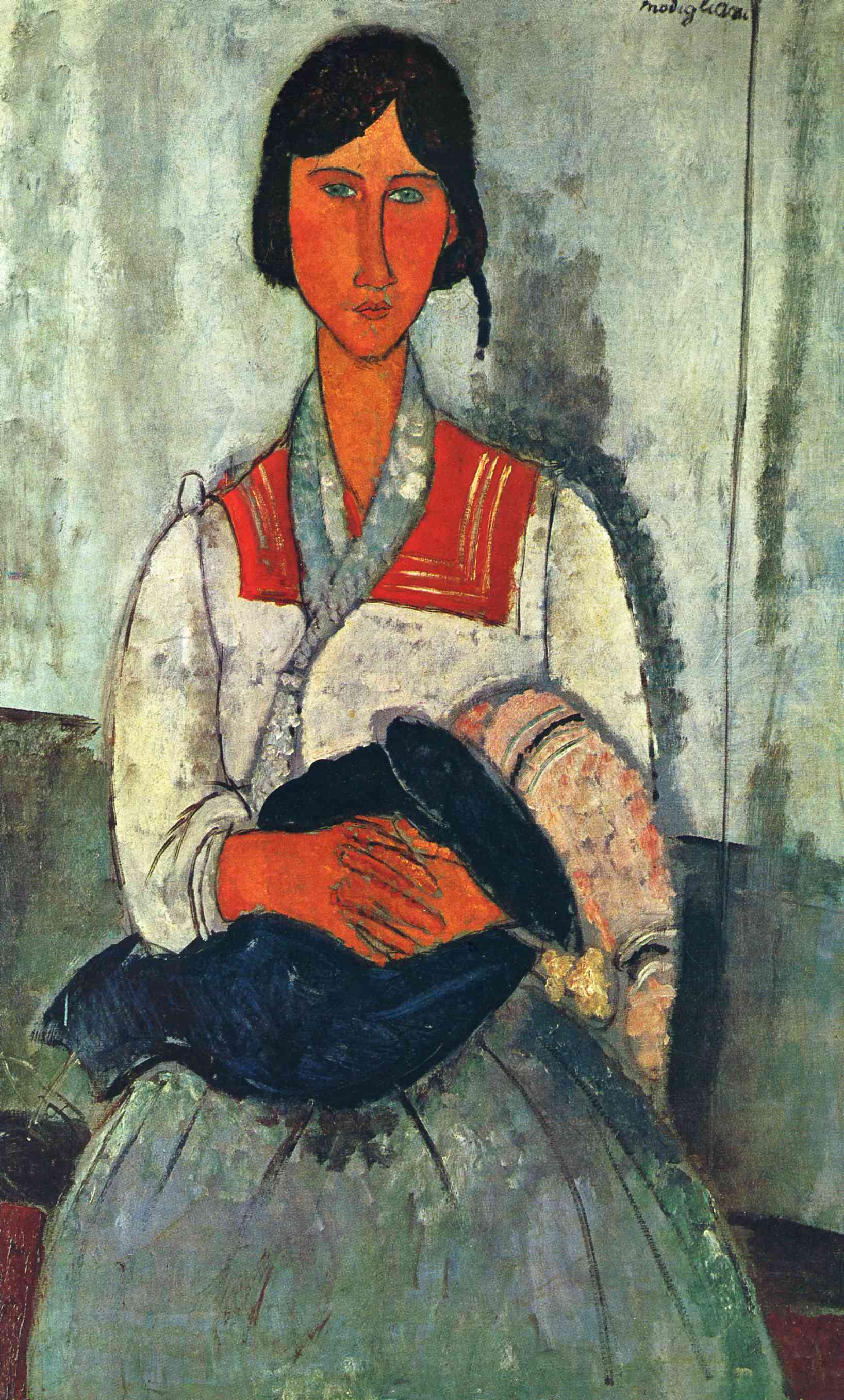Sotheby’s Impressionist & Modern Art 14 May 2018

Amedeo Modigliani, Nu couché (sur le côté gauche). Signed Modigliani (lower left). Oil on canvas, 35¼ by 57¾ in.; 89.5 by 146.7 cm. Painted in 1917. Estimate in excess of $150 million. Courtesy Sotheby’s.
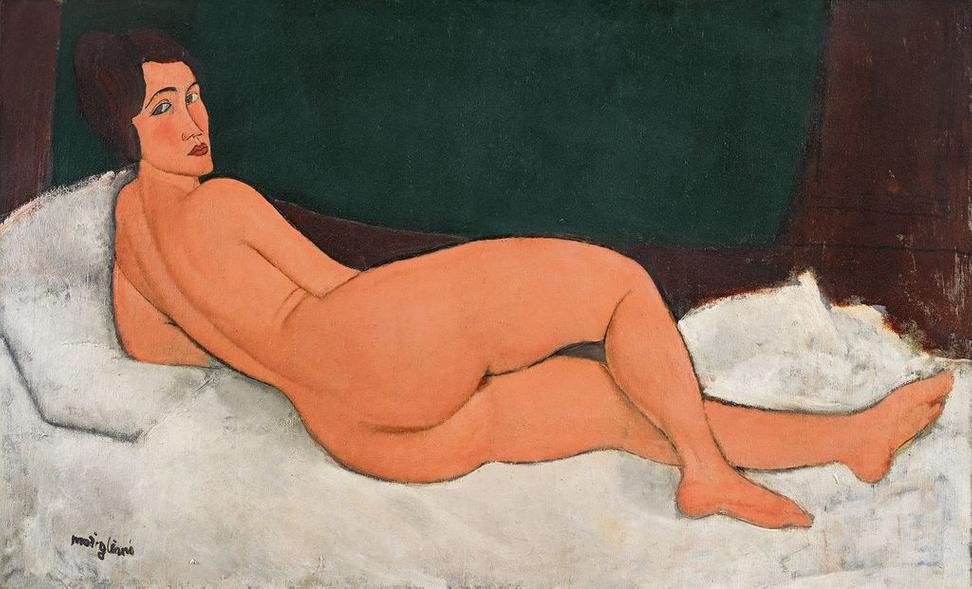
Amedeo Modigliani’s stunning Nu couché (sur le côté gauche) is estimated to sell for in excess of $150 million in Sotheby’s Impressionist & Modern Art Evening Sale on 14 May 2018 – the highest estimate ever placed on a work of art at auction.
Painted a century ago, Nu couché is the greatest work from the iconic series in which Modigliani reinvented the nude for the Modern era. Upon their debut exhibition in 1917, these striking and sensual images stopped traffic – quite literally – and prompted the police to close the show. Today, the series is recognized as one of the seminal achievements in Modern painting. The shock and awe that Modigliani’s nudes continue to elicit was evident most recently during Tate Modern’s celebrated retrospective of the artist’s work that included Nu couché.
In addition to being the finest example from the series, Nu couché is distinguished further as the largest painting of Modigliani’s entire oeuvre – measuring nearly 58 inches / 147 centimeters across – and the only one of his horizontal nudes to contain the entire figure within the canvas.
The majority of the 22 reclining nudes from the series are found in museums, with particular depth in the United States: the Solomon R. Guggenheim Museum, The Museum of Modern Art and The Metropolitan Museum of Art in New York each hold three examples. Outside of the United States, institutions with reclining nudes include the Long Museum in Shanghai and The Courtauld Gallery in London.
Nu couché was acquired by the present owner at auction in 2003 for $26.9 million. In 2015, another reclining nude from the series sold at auction for $170.4 million, at the time marking the second-highest price ever paid for a work of art at auction.
Simon Shaw, Co-Head Worldwide of Sotheby’s Impressionist & Modern Art Department, commented: “This painting reimagines the nude for the Modern era. Modigliani depicted his models as confident and self-possessed in their sexuality. Nu couché is an incredibly sensual image, with the sitter’s gaze meeting the viewer’s head-on in truly mesmerizing fashion. While situating itself within a classical canon of nude painting, the work is radically innovative in style: Modigliani assimilates a world of visual cultures across the centuries, from Egyptian, Japanese, African, Indian and Iberian sculpture, from Renaissance frescoes through Romanticism to the cutting-edge of Cubism. Together these pictures signal a watershed in perhaps the greatest tradition in art – there is the nude before Modigliani, and there is the nude after Modigliani.”
Modigliani began painting nudes in 1908, but it was only after he abandoned sculpture in 1914 that he developed the unique idiom evident in Nu couché. His aesthetic was gleaned from the artistic precedents of Italian Renaissance and Mannerist painting, the linear simplicity of African carvings and the earth-toned palette and geometric modelling of Cubism – all of which can be seen in the present work.
The majority of Modigliani’s output was based in portraiture, which, more often than not, depicted those who surrounded him: fellow artists, poets, lovers and patrons. Aside from a veritable who’s who of the more bohemian artistic circles in Paris, Modigliani would also seize upon chances to find other sitters – though the opportunities for unpaid models were few and far between.
It was not until Modigliani’s dealer Léopold Zborowski stepped forward with both a space and paid models that Modigliani embarked on his great series of nudes. Zborowski provided the artist a stipend of 15 Francs a day, and paid the models five Francs to pose in an apartment just above his own at 3 Rue Joseph Bara.
Draped in sheets, perched on chairs, reclining on sofas or beds, the models are relatively anonymous – Modigliani did not paint his prime paramours in the nude. But while he may have had emotional distance from the sitters, he certainly did not have physical distance: the women dominate their space, filling the frame with stretching hands and feet, forearms and calves literally off of the edges of the canvas. Their nudity is self-assured and proud, not cloaked in myth or allegory.
In total, Modigliani completed 22 reclining nudes and 13 seated nudes between 1916 and 1919, with the majority – including the present work – painted in 1917. And from the first moment the works were displayed that year, they stopped traffic.
At the request of Zborowski, Parisian dealer Berthe Weill staged an exhibition of Modigliani’s paintings and works on paper. In the window of her gallery – by some accounts directly hung in the window, and by others clearly visible through it – were a number of the nudes.
Upon opening, crowds immediately gathered in the exhibition to witness the strikingly-real works, and traffic began to build up outside. Across from Weill’s gallery was a police station, and the commotion did not go unnoticed. An officer traipsed across the road and asked for the removal of the offending canvases, which he considered indecent. Weill’s refusal to do so found her in the police station speaking with the police chief. The show was closed with Zborowski only selling two drawings at 30 Francs each.
Over 100 years after its creation, the power of Nu couché to amaze and startle remains as potent as it did in 1917.
Amedeo Modigliani
Portrait of Baranowski
oil on canvas
Painted in 1918.
Estimate: £10,000,000-15,000,000
Painted in 1918.
Estimate: £10,000,000-15,000,000
“To do any work, I must have a living person, I must be able
to see him opposite me” – Modigliani
Working in Paris for most of his career, Modigliani is today
considered one of the excess of $100 million and last June, Sotheby’s London
sold Jeanne Hébuterne (au foulard) – one of the greatest portraits the
artist painted of his most loyal muse – for $56.6 million.
Portrait de Baranowski,
depicting a young man with fragile goodlooks and a pensive, introspective air,
is a wonderfully elegant composition that powerfully synthesises all the
elements of Modigliani’s portraits in this period – from geometricsimplification
of the stylised human form to the almond, vacant eyes that render the sitter
impenetrable.
Exhibited at the 1930 Venice
Biennale show dedicated to Modigliani, the work is also an example of the
artist’s mannerist style that was partly derived from his fascination with the
Old Masters of his native Italy.
Christie's 2017
Modigliani’s Cariatide (1913, estimate: £6,000,000-9,000,000), stands as an intriguing crossover work, straddling the boundary between Modigliani’s two principal creative impulses of painting and sculpture.
Executed in 1913, Cariatide is a rare example of Amedeo Modigliani’s painterly practice during this early period of his artistic career, in which he focused primarily on sculpture. One of only a handful of oil paintings which explore the form of a sculpted caryatid, the present work illustrates the complex working process that lay behind each of the artist’s three-dimensional projects in stone. Creating countless drawings and sketches before ever taking his hammer to a block, these studies offered Modigliani a forum in which to experiment and visualise the ideas that swirled around his head, before translating them into sculptural form.Sotheby's 2017
Amedeo Modigliani
Portrait of Baranowski
oil on canvas
Painted in 1918.
Estimate: £10,000,000-15,000,000
Painted in 1918.
Estimate: £10,000,000-15,000,000
“To do any work, I must have a living person, I must be able
to see him opposite me” – Modigliani
Working in Paris for most of his career, Modigliani is today
considered one of the excess of $100 million and last June, Sotheby’s London
sold Jeanne Hébuterne (au foulard) – one of the greatest portraits the
artist painted of his most loyal muse – for $56.6 million.
Portrait de Baranowski,
depicting a young man with fragile goodlooks and a pensive, introspective air,
is a wonderfully elegant composition that powerfully synthesises all the
elements of Modigliani’s portraits in this period – from geometricsimplification
of the stylised human form to the almond, vacant eyes that render the sitter
impenetrable.
The painting is a quintessential example of Modigliani’s
role as the chronicler of the vie bohème of Montparnasse, depicting the
androgynous Polish painter Pierre-Edouard Baranowski. The sitter’s gentle
youthful looks inspired Modigliani to create one of his most outstanding yet
melancholy portraits, combining the characteristics of the individual with the
lyricism of a poetic idea – at a time when the artist’s own health and looks
were destroyed by heavy drinking and drug taking. Exhibited at the 1930 Venice
Biennale show dedicated to Modigliani, the work is also an example of the
artist’s mannerist style that was partly derived from his fascination with the
Old Masters of his native Italy. CHRISTIE’S MAY 12 2016
Also featured is Amedeo Modigliani’s (1884-1920) Jeune femme à la rose (Margherita) (estimate: $12,000,000-18,000,000) painted in 1916. This portrait is a quintessentially modern painting of the female figure painted in Modigliani’s signature style- with a patrician long neck and oval face, large eyes and small, red lips. Here he adds the uncoventional, and alluring adornment of a rose in the subject’s décolletage, further heightening her seductive allure. It is the finest of a series of three paintings from 1916 recorded by Ambrogio Ceroni that takes a dark haired and brown-eyed young woman as its subject. It has been suggested that the model is the artist’s older sister Margherita.
Christie’s November 9, 2015
Amedeo Modigliani’s masterpiece Nu couché (Reclining Nude) was auctioned on Monday, November 9 in New York. The painting, executed in 1917-18, will be the centerpiece of a special curated Evening Sale of 20th Century art focused on the theme of “The Artist’s Muse”.
The painting is one of a series of great female nudes made for Léopold Zborowski that famously caused a scandal nearly a century ago when they were exhibited at Modigliani’s first and only one-man show at the Galerie Berthe Weill in Paris. Outraged by the content of this show — which caused a crowd to form outside the gallery window where one of Modigliani’s nudes was openly on display — the police demanded the immediate closure of the exhibition.
The upcoming sale this November marks the first time this portrait is appearing at auction. Estimated to exceed $100 million, the portrait is poised to break the standing world auction record of $70.7 million for any work by Modigliani, one of the greatest artists of the 20th century.
Jussi Pylkkänen, Christie’s Global President and Chief Auctioneer comments, “This is quite simply one of the most important paintings I have handled in my long career at Christie’s. There are a very small number of masterpieces that we dream of handling: this magnificent Modigliani has always been one of them. This powerful and noble female nude is a work of timeless beauty and one of the greatest works by the artist. It is a particular honour to be entrusted with the sale of this painting as my own area of expertise has always been the early 20th Century avant-garde, the paintings that shook the foundations of convention.” Mariolina Bassetti, Christie’s Chairman and International Director, Italy, added, “This is the painting that defines Modigliani”.
Originally in the collection of Modigliani’s mentor, friend, and dealer, Léopold Zborowski, Nu couché (Reclining Nude) has been so widely and frequently published and referred to over the past century that it has become one of the most recognized images of early 20th century painting and certainly represents one of Modigliani’s best known works. It was also previously in the celebrated collection of the late Gianni Mattioli, one of the greatest champions of Italian early 20th Century Modernism, who organized a global tour of his superb Italian Art collection in the 1960s. In the 1950s, this work toured to the Museum of Modern Art in New York where it took pride of place on the cover of the exhibition catalogue.
The painting has also been featured in major museum shows across the globe, including the Palais des Beaux Arts in Brussels, the Stedelijk Museum in Amsterdam, the Musée National d’Art Moderne in Paris, the Tate Gallery and the Royal Academy of Arts in London, the Museum of Modern Art in New York, and the Palazzo Reale in Milan.
Christie’s Impressionist and Modern Art May 4 and 5, 2015
Amedeo
Modigliani, Portrait de Béatrice Hastings, oil on canvas, 1916. US $7-10million
- This dynamic portrait depicts Modigliani’s muse Béatrice Hastings, one of many pen names for South African writer, poet and literary critic, Emily Alice Haigh.
- Hastings frequently posed for Modigliani, with whom she shared an apartment in Monteparnasse.
- Modigliani used portraiture, especially of those in his immediate circle, as a means to explore an idealised aspect of humanity, an image of internal as well as external likeness.
- With its expressive painterly surface, Béatrice Hastings, is in glorious physical condition, giving it the appearance of just having left the easel.
Christie’s Impressionist and Modern Art Evening Sale in London on 6 February 2013
Christie’s Impressionist and Modern Art Evening Sale in London on 6 February 2013 was led by Jeanne Hébuterne (au chapeau), 1919, one of the acclaimed elegant and lyrical portraits that Amedeo Modigliani (1884-1920) created of his muse and lover (estimate: £16-22 million.
It is a tribute to the quality of Jeanne Hébuterne (au chapeau), 1919, by Amedeo Modigliani (1884-1920) that it was included in the small posthumous retrospective of Modigliani’s works held at the XIII Biennale in Venice in 1922, the first such show to take place in his home country (estimate: £16-22 million, illustrated page one top centre). The portrait is filled with grace and poise, accentuated by the sinuous curve of Jeanne’s neck and the gentle undulation of her body. These qualities point to why some of Modigliani’s pictures from this late phase in his short but dramatic and influential career are referred to as ‘Mannerist.’ Jeanne Hébuterne (au chapeau) is a strikingly modern work of art; an idealised image of the artist’s lover. Modigliani used portraiture as a means to explore an idealised aspect of humanity, an image of internal as well as external likeness. Jeanne serves as the Muse for an insightful and lyrical exploration of the human spirit, created using a subtle blending of colours that radiate a sense of health. Looking at Modigliani’s life and at his work, it becomes apparent that the two were diametrically opposed in terms of atmosphere.
The serene calm of Jeanne Hébuterne (au chapeau) contrasts starkly with the legendary tales of drunkenness and bohemianism with which Modigliani is now so often associated. Perhaps his works provided a balance to his turbulent lifestyle. There is a near-religious sense of grace instilled in this image of his final great love, her hand raised like that of the Madonna. Modigliani created relatively few paintings during his short life – during which he was increasingly accepted as a pioneer in the world of modern art - and, in comparison with those of his counterparts, his works rarely come to the market.
Sotheby’s IMPRESSIONIST & MODERN ART EVENING SALE NEW YORK, 7 MAY 2013
L’Amazone is an early masterpiece by the artist and one of his most arresting images of women (est. $20/30 million). Painted in 1909, it depicts Baroness Marguerite de Hasse de Villers, a glamorous socialite and lover of the younger brother of Modigliani’s patron, Paul Alexandre. Marguerite poses in her riding-habit, gloved-hand on her hip and her arch gaze holding the viewer captivated. L’Amazone’s draughtsmanship and exquisite brushwork announced the arrival of a singular talent that Modigliani would explore during the following decade.
Sotheby's 2014
LOT SOLD. 2,517,000 USD
Sotheby's 2013
LOT SOLD. 6,481,500 EUR
Sotheby's 2011
LOT SOLD. 3,513,250 GBP
Sotheby's 2010
LOT SOLD. 19,122,500 USD
Sotheby's 2008
Estimate 18,000,000
—
25,000,000 USD
Christie's 2015
Christie's 2015
Christie's 2014
Christie's 2013
AMEDEO MODIGLIANI (1884-1920)
Christie's 2012
Bonhams 2011
Amedeo Modigliani (1884-1920)
Portrait de femme
Sold for £1,812,000 (US$ 2,763,287)
Bonhams 2012
Bonhams 2004
Amedeo Modigliani (1884-1920)
Christina 80 x 69 cm. (31.5 x 27 1/8 in.)
Sold for £1,546,650 (US$ 2,358,630)
Amedeo Modigliani (1884-1920)
Portrait de femme
Sold for £1,812,000 (US$ 2,763,287)
Bonhams 2012
Bonhams 2004
Amedeo Modigliani (1884-1920)
Christina 80 x 69 cm. (31.5 x 27 1/8 in.)
Sold for £1,546,650 (US$ 2,358,630)
, Italian, 1884 - 1920
1916
oil on canvas
overall: 81.1 x 46.7 cm (31 15/16 x 18 3/8 in.)
framed: 90.8 x 55.5 cm (35 3/4 x 21 7/8 in.)
1963.10.76
, Italian, 1884 - 1920
1917
oil on linen
overall: 55.3 x 38.1 cm (21 3/4 x 15 in.)
framed: 71.4 x 54.6 x 6.3 cm (28 1/8 x 21 1/2 x 2 1/2 in.)
1963.10.171
, Italian, 1884 - 1920
1917
oil on canvas
overall: 92.4 x 60.3 cm (36 3/8 x 23 3/4 in.)
framed: 112.4 x 80.3 cm (44 1/4 x 31 5/8 in.)
1963.10.44
, Italian, 1884 - 1920
1917
oil on canvas
overall: 91.7 x 59.7 cm (36 1/8 x 23 1/2 in.)
framed: 112.7 x 81.3 cm (44 3/8 x 32 in.)
1963.10.47
, Italian, 1884 - 1920
1917
oil on canvas
overall: 81.3 x 46 cm (32 x 18 1/8 in.)
framed: 95.9 x 60 cm (37 3/4 x 23 5/8 in.)
1963.10.45
•
, Italian, 1884 - 1920
1917
oil on canvas
overall: 55.3 x 33 cm (21 3/4 x 13 in.)
framed: 78.1 x 55.9 x 3.8 cm (30 3/4 x 22 x 1 1/2 in.)
1963.10.173
•
, Italian, 1884 - 1920
c. 1917
oil on canvas
overall: 46.2 x 33.2 cm (18 3/16 x 13 1/16 in.)
framed: 62.8 x 50.4 x 6.9 cm (24 3/4 x 19 13/16 x 2 11/16 in.)
1963.10.175
, Italian, 1884 - 1920
1917
oil on linen
overall: 65.4 x 100.9 cm (25 3/4 x 39 3/4 in.)
framed: 84.7 x 120 cm (33 3/8 x 47 1/4 in.)
1963.10.46
, Italian, 1884 - 1920
1917
oil on canvas
overall: 92.1 x 60.7 cm (36 1/4 x 23 7/8 in.)
framed: 114.9 x 82.5 x 7.6 cm (45 1/4 x 32 1/2 x 3 in.)
1963.10.176
, Italian, 1884 - 1920
1918
oil on canvas
overall: 100.3 x 64.8 cm (39 1/2 x 25 1/2 in.)
framed: 114.9 x 80.6 x 6.3 cm (45 1/4 x 31 3/4 x 2 1/2 in.)
1963.10.172
, Italian, 1884 - 1920
1918
oil on canvas
overall: 60.2 x 91.7 cm (23 11/16 x 36 1/8 in.)
framed: 83.2 x 112.4 cm (32 3/4 x 44 1/4 in.)
1963.10.77
Modigliani,
Amedeo (painter)
, Italian, 1884 - 1920
1919
oil on canvas
overall: 115.9 x 73 cm (45 5/8 x 28 3/4 in.)
framed: 134.6 x 93.3 x 9.5 cm (53 x 36 3/4 x 3 3/4 in.)
1963.10.174
, Italian, 1884 - 1920
1910/1911
limestone
overall: 65.2 x 19 x 24.8 cm (25 11/16 x 7 1/2 x 9 3/4 in.)
1963.10.241
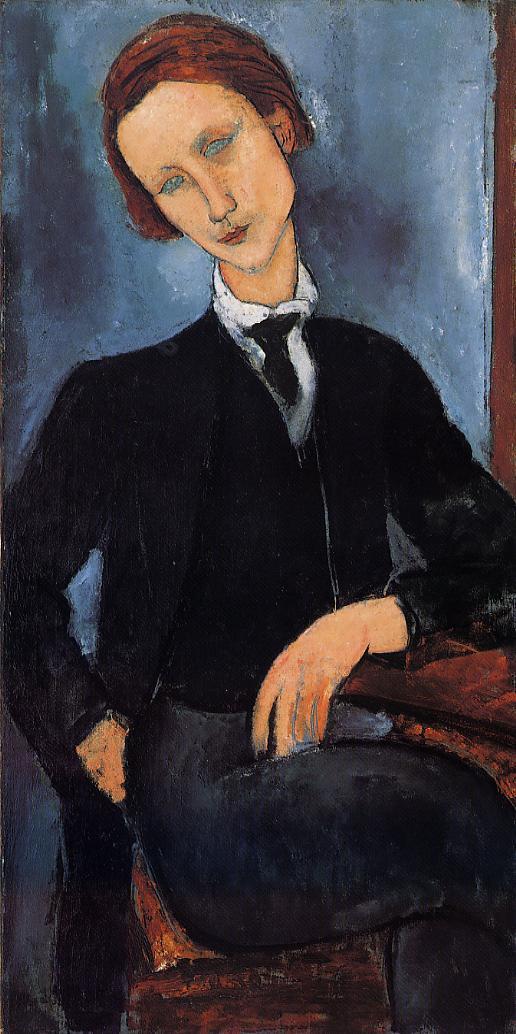


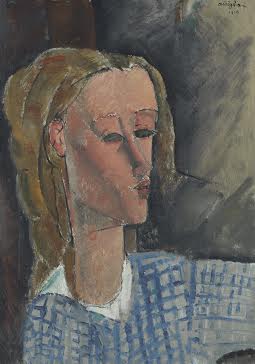

.jpg)





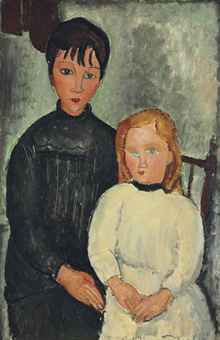
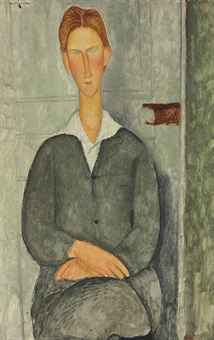
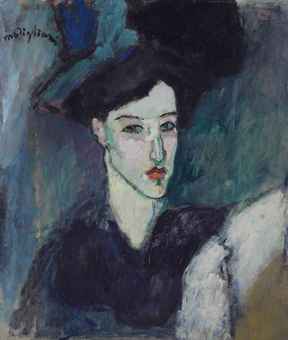
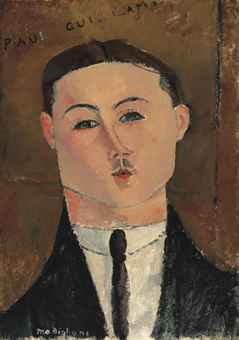
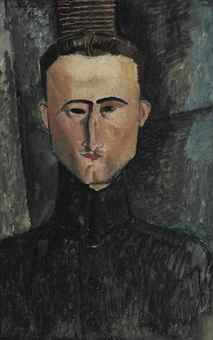
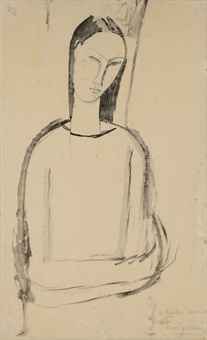
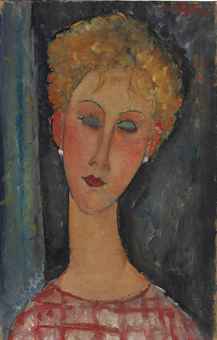
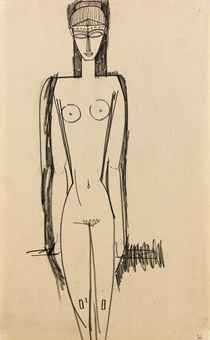
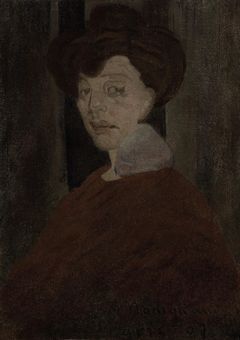
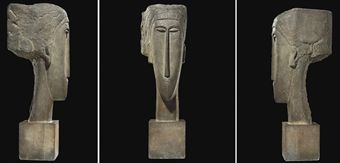
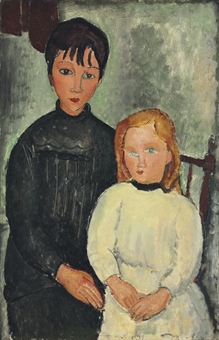
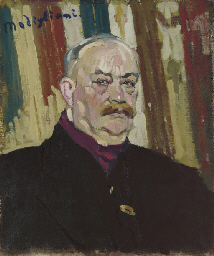
_-_Ritratto_di_Jean_Cocteau_(1889-1963)_-_1916.jpg)
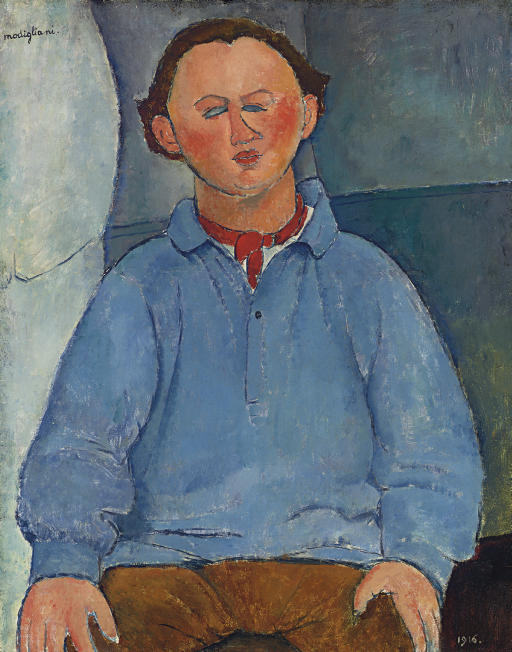
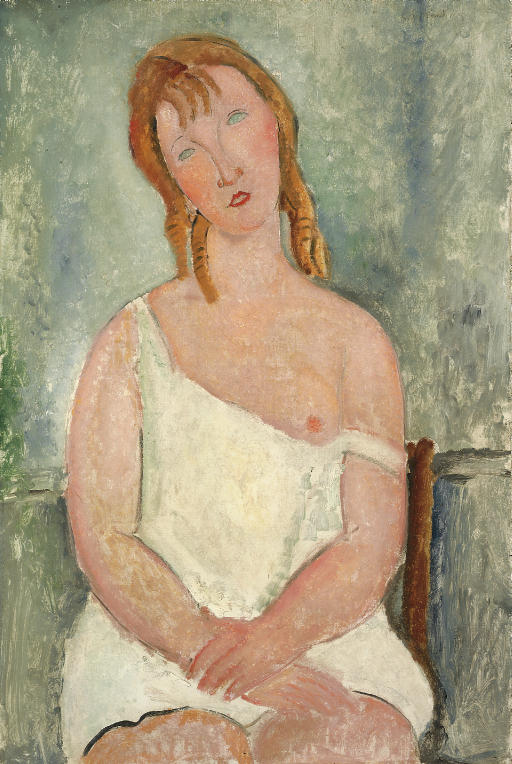
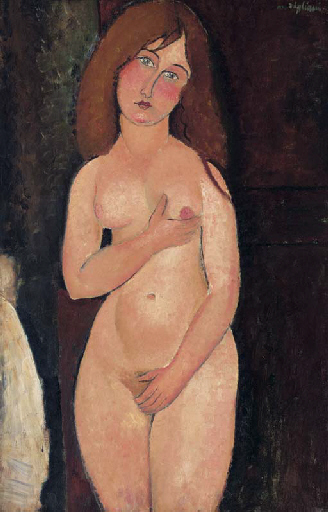

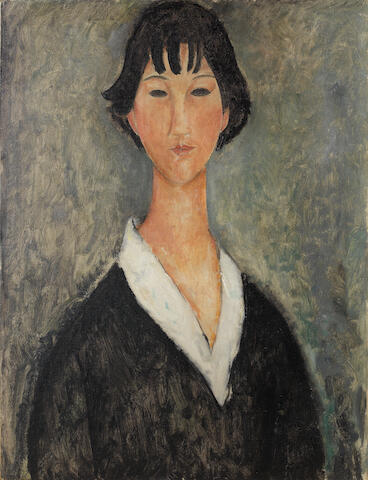
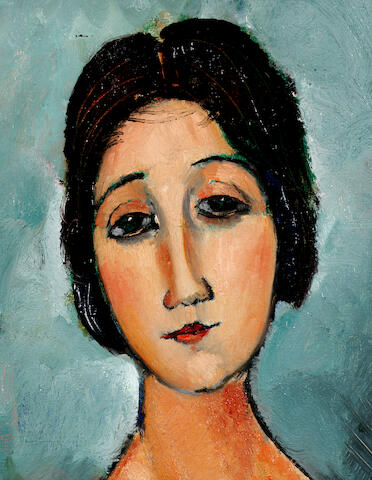
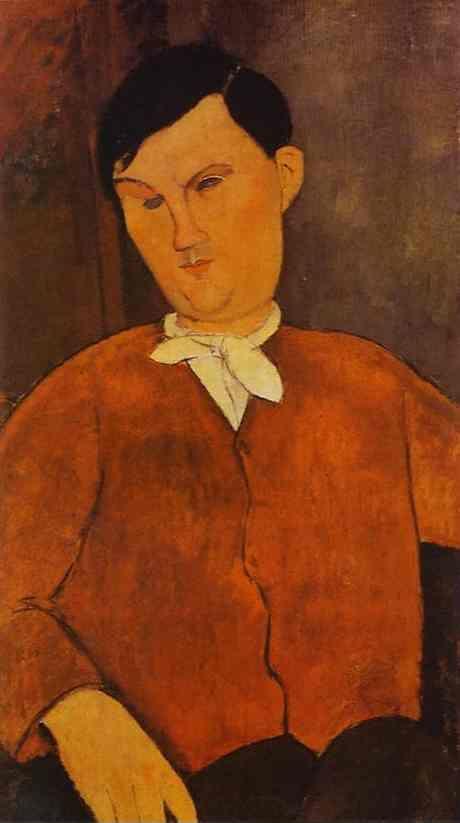

.jpg)
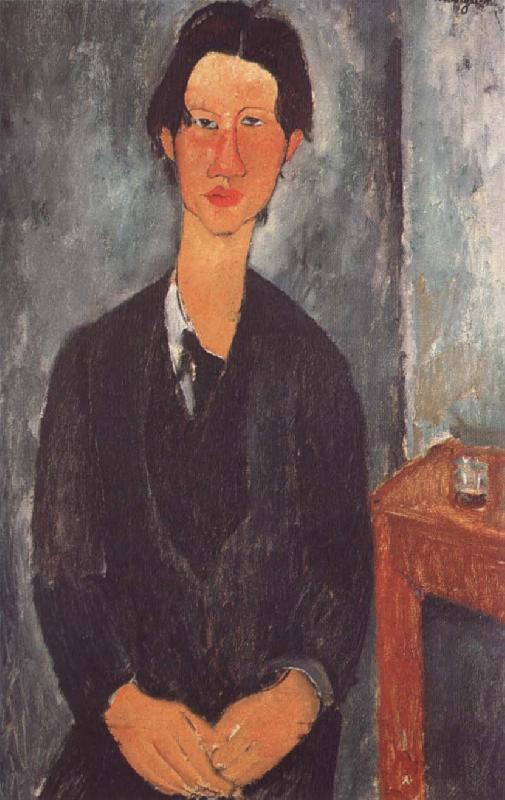
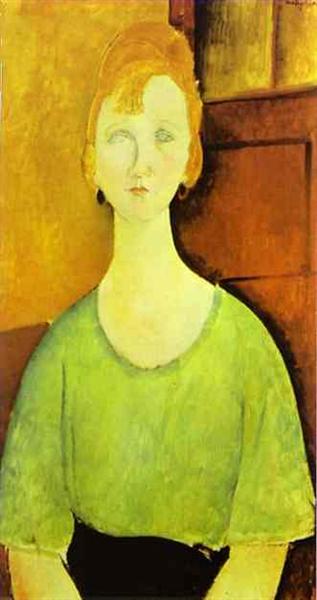



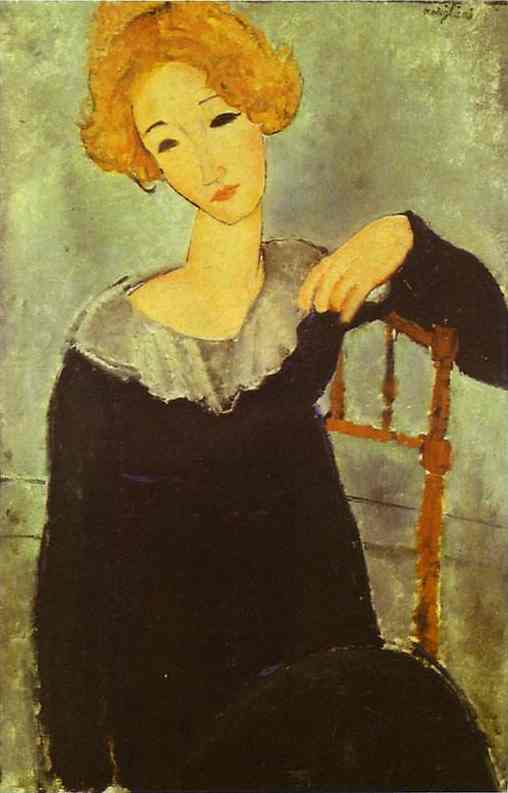
.jpg)
